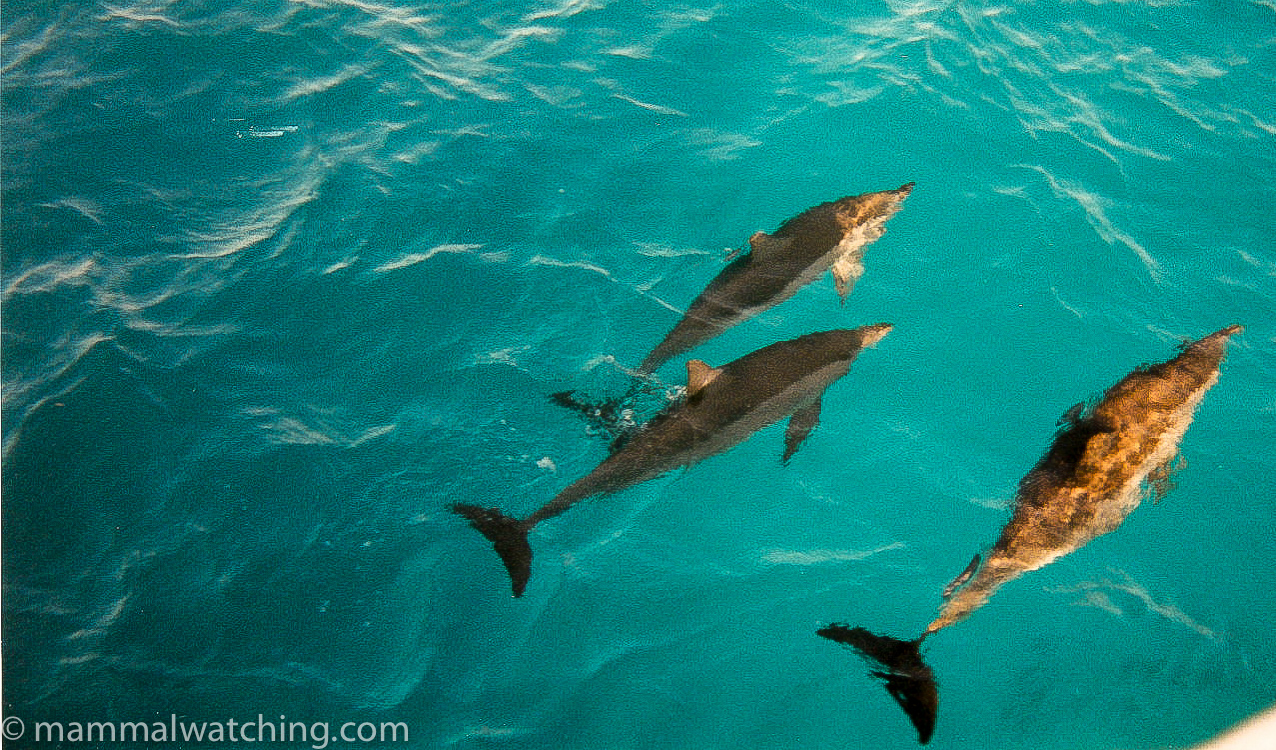
Egypt

I’ve been to Egypt twice, but for reasons other than mammals. In 1995 I spent a week on a boat out of Hurghada, where I was diving in the southern Red Sea. The diving was fabulous but apart from a few Bottlenose and Spinner Dolphins I don’t remember seeing any mammals.

Spinner Dolphins, Stenella longirostris, Red Sea
In September 2007 I had to visit Cairo for work so squeezed in a day’s mammal watching.
Cairo is very large, very frantic and very polluted. In September it is also very hot. There are numerous tour companys in the town and arranging a car with driver is cheap and easy. The tour company I used – from the Minamar Hotel – were fine. Fine in that they turned up on time and charged me what they’d promised. The vehicles were good enough too. I say vehicles because we started the day with a Landcruiser. At lunchtime, after a parking violation and subsequent refusal to pay baksheesh, both the car and driver were taken away by the police. The Landcruiser was replaced with an air conditioned minibus and the new driver took great delight in showing most people we met for the rest of the day the porn movies he had on his phone. Welcome to Egypt.
Cairo is home to a wide variety of bat species, and some interesting ones roost in the Pyramids at Giza (but the roosts are in areas closed to the public). On the very helpful advice of Christian Dietz (author of an excellent key for identifying Egypian bats) I visited a small and quite scenic national park called Wadi Digla (aka Wadi Degla) just on the outskirts of Cairo in a suburb called Maadi.
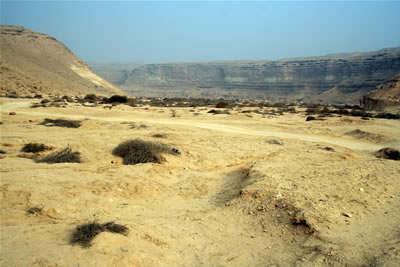
Wadi Digla
Wadi Digla is a wide canyon with a track running down the middle. There are a few caves which according to Christian should be home to Egyptian Tomb Bats (Taphozous perforatus ), Mouse-tailed Bats (Rhinopoma species) and Trident Leaf-nosed Bats (Aselia tridens).
I arrived at 7 a.m., after asking about 10 people for directions to find the park. We then had to wait for three hours before a ranger arrived who knew where the caves were. He directed me to one that was about 3.5 km down the track into the park and high up on the left hand side as you are driving in. The cave was very dusty and though access to the main chamber was easy, getting to the back, where the bats were, was more difficult and involved climbing around two mine shafts (which I found out to my cost were a lot easier to climb around on the way in than on the way out!). There were a hundred or so Naked-tumped Tomb Bats (Taphazous nudiventris) roosting in the cave but I couldn’t see the other two species, which were the ones I was more interested in. It is possible that they were deeper in the cave, but to have found out would have meant climbing down a rope into the mine shafts, which I decided against.
The ranger reckoned there was another cave at about the 10 km mark but at this time of year it was too hot for the bats. I also saw what I guess must have been a House Mouse in the cave. It was extremely pale, but Egypt has very few mice species and it wasn’t one of the Spiny Mice.
Wadi Digla is home to a few Dorcas Gazelle and Nubian Ibex, neither of which are seen all that often, as well as foxes and gerbils. But the park closed at 6 p.m. so spotlighting wasn’t an option.
After a brief visit to the Pyramids where I was able to confirm that I could not in fact go into any of the tombs or passages where bats might live we headed to the Aquarium Gardens (also know as the Fish Gardens) in the centre of Cairo on Gabalayia Street, Gezira Island. The gardens’ central feature is a network of grottoes which double as an aquarium, and in the main chamber I found a small roost of Egyptian Rousettes. I presume these bats are here year round.
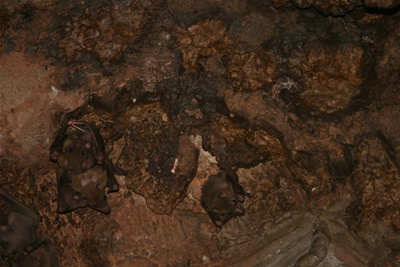
Egyptian Rousette, Rousettus aegyptiacus
In the afternoon – later than planned after the car was impounded by the police – we headed off towards Fayoum, a low-lying area north of Cairo. The traffic was terrible and it took us an hour and a half to reach the freeway, and then another hour and a half to get to Wadi Rayan, a national park near the town of Fayoum.
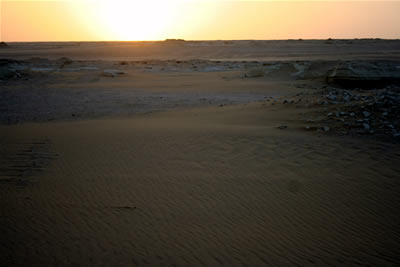
Wadi Rayan
I was told there that there was no chance of seeing Gazelles or much else in September, and should return in December. Undeterred, we spotlit along the main road through the park for an hour and I saw several gerbils two of which I could identify as a Lesser Egyptian Gerbil and a probable Pygmy Gerbil. I also saw a couple of Golden Wolves (newly split from Golden Jackals in 2015) a good way off the road.
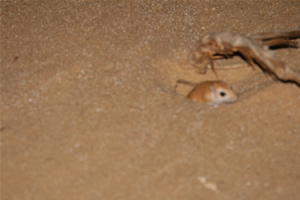
Lesser Egyptian Gerbil, Gerbillus gerbillus
Back in Cairo I was surprised at the number of bats zipping around my hotel balcony (I was up on the 18th floor). A very large one was flying around that could only have been a Rousette or a European Freetailed Bat.
If I had had a bit more time I would have visited Dendera Temple, about 60km from Cairo. It is a well known tourist site but also home to many bat species, at least some of which live in areas accessible to the public.
Community Reports
Marsa Alam, 2022: Romain Bocquier’s note of seeing Dugongs in southern Egypt.
Egyptian Weasels in Alexandria, 2019: Nayer Youakim’s account of Egyptian (or Least) Weasel watching.
Also See
Egyptian Golden Jackals are actually wolves (Jan 2011).
Resources
Hoath, R. 2003. A Field Guide to the Mammals of Egypt. American University in Cairo Press. The only holiday I’ve spent in Egypt I’ve been diving, but this field guide makes me want to go back to look for some of the surprisingly many – 100+ – mammals found there.
A nice key for identifying Egypt’s bats is downloadable here.


Leave a Reply
You must be logged in to post a comment.